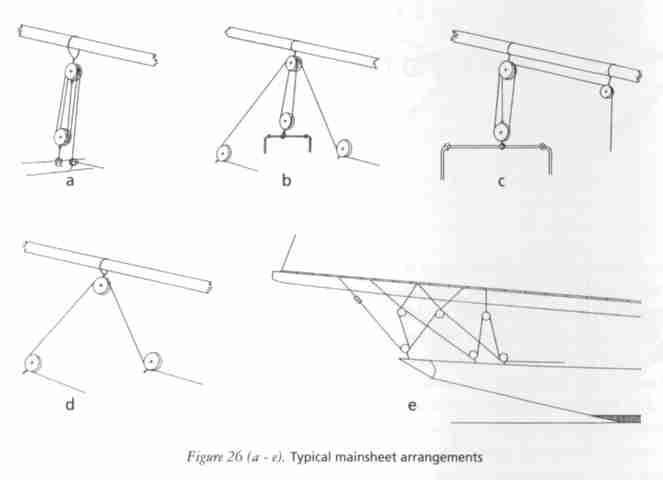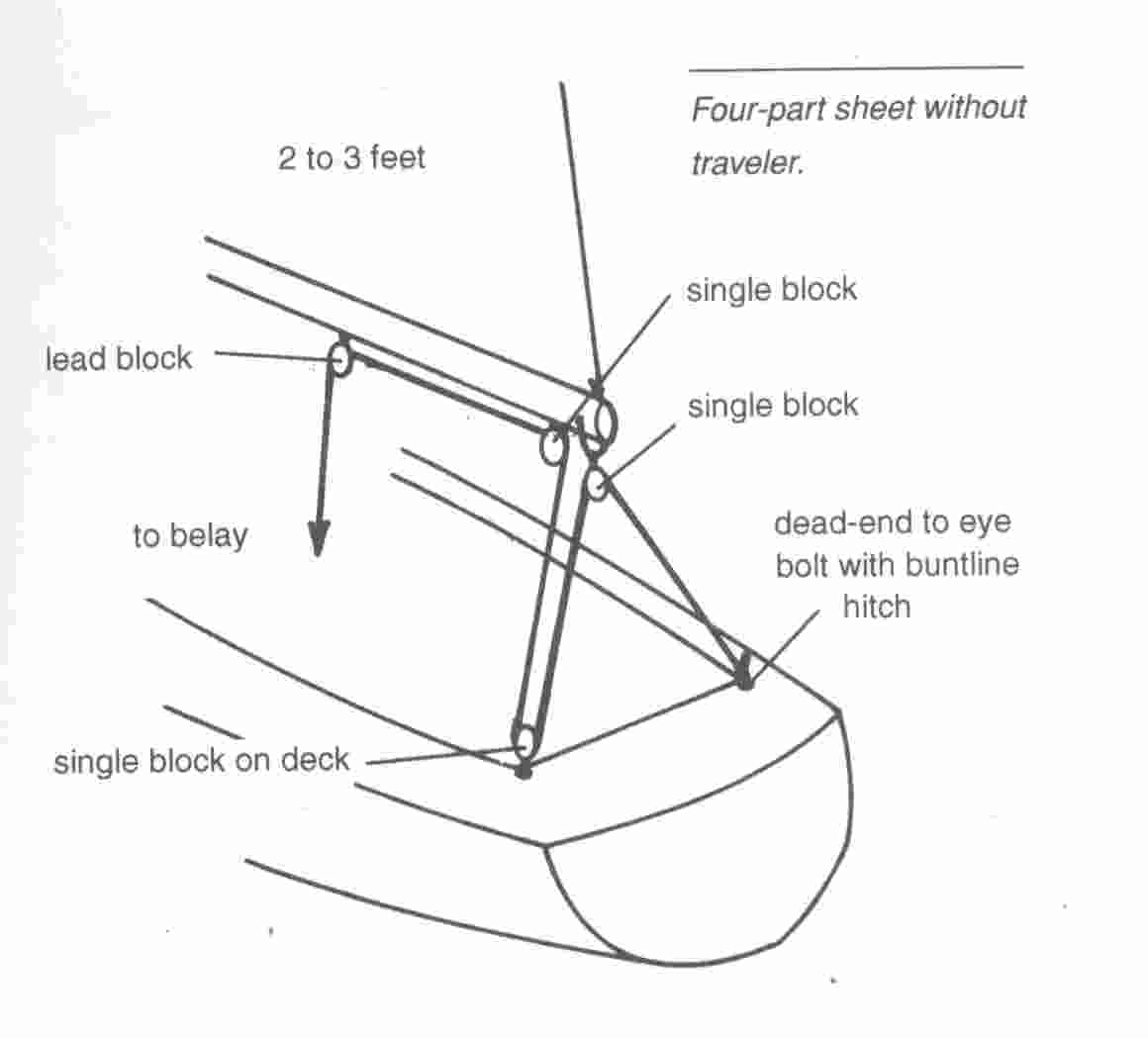Main Sheet and Boom
Revised 06/30/00
|
Main Sheet and Boom Revised 06/30/00 |
|
|
|
|
|
|
For the main sheet,you can use any of the "regular" methods shown in most books for bermuda rigs. Usually, a traveler is used aft and the main sheet is dead-ended to it with an eye, shackle or snaphook that rides along it. The main sheet then is rove from aft to forward through a single block placed aft on the boom, then led to another single block located forward on the boom (you locate this block where it will be convenient to grasp the sheet coming down from it into the cockpit when you are seated.) For a dinghy, the traveler can be made like the gaff bridle, out of wire or rope, but has to come high enough to clear the tiller. You can secure the traveler to an eye on both port and starboard sides of the transom or rear deck quarter. This works well for sails up to 80 square feet or so. But for more purchase and easier handling, and especially if the sail is larger than 80 square feet, a three part sheet is best. To add the extra purchase, use a becket block on the end of the boom. The main sheet is dead-ended to the becket, rove down to the single block on the traveler from forward to aft, up through the becket block's sheeve, then forward to the single block on the mast which is located where convenient to grasp the sheet coming down from it into the cockpit.

A variety of methods are illustrated here from Leather's Gaff Rig Handbook, and he goes into some detail regarding the use of a mainsheet horse, as in "C" above, that allows the sheet to relieve the sail of twist. This helps windward performance. On some boats, the mainsheet horse extended slightly outboard with ends returned by radius to the bulwarks.
The boom is one area where weight need not be reduced, according to Cunliffe in Hand Reef and Steer. A solid boom is fine. It is low enough that obsessing about weight isn't necessary.
Initially, I though Aslan might use a four part main sheet, not because the sail area is large enough to require it, but because I've changed the design to incorporate a stern hatch that would interfere with having a single block at the center of the stern deck. A drawing from Roger Taylor's Knowing the Ropes is shown below showing a way to make this, and I include it here to show both the quality of the information in the book itself, and to also show that much of the information useful to a novice like me comes from the other chapters not specifically geared to the gaff rig. The only thing I'm concerned about is the possibility that this much purchase may mean a lot of line laying in the cockpit as I'm trimming the sail. So I may use a bridle running from side to side at the stern with the main sheet riding along it, then going up to a single block near the end of the boom, then forward to the lead block. Or, my thinking is that perhaps I'll rig some kind of mainsheet horse aft of and above the stern hatch cover.


|
|
|
|
|
|